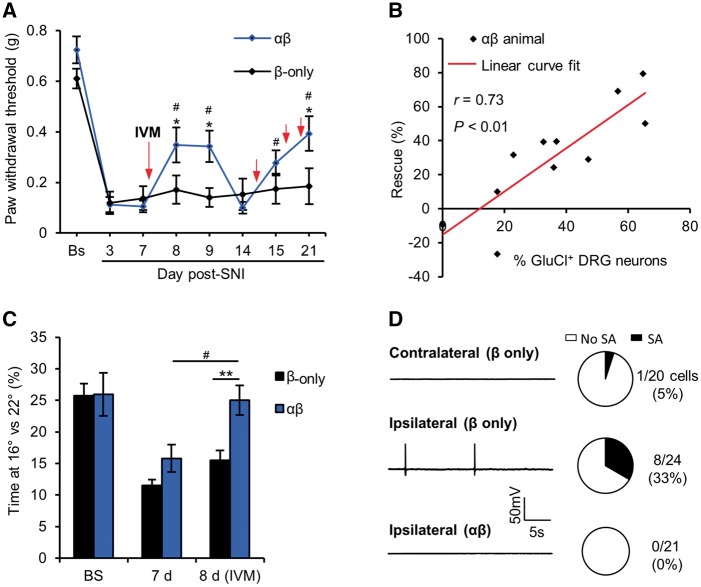Figure 5.
GluCl activation can reverse nerve injury-induced hypersensitivity. (A) Time course of mechanical hypersensitivity following SNI. Red arrows indicate the time at which animals received a systemic dose of 5 mg/kg ivermectin. *P < 0.05, repeated measures (RM)-ANOVA followed by post hoc Bonferroni test comparing means of β-only and αβ groups. #P < 0.05, repeated measures ANOVA followed by post hoc Bonferroni test comparing post-SNI time-points with Day 7, n = 11 animals per group. (B) Correlation between average rescue (Days 8 and 15) of mechanical hypersensitivity following a single dose of ivermectin and the proportion of L4 DRG neurons expressing GluCl. *P < 0.05, Pearson’s correlation co-efficient. (C) Time spent at 16°C versus 22°C drops 7 days after SNI but is recovered 24 h following systemic ivermectin. **P < 0.01, *P < 0.05, repeated measures ANOVA followed by post hoc Bonferroni test comparing means of β-only and αβ groups. #P < 0.05, repeated measures ANOVA followed by post hoc Bonferroni test comparing means at Day 7 versus Day 8, n = 11 animals per group. (D, left) traces of GluCl+ neurons taken from uninjured (contralateral) and injured (ipsilateral) DRG of SNI animals illustrating resting membrane potential over 30 s. (Right) Proportion of cells exhibiting ectopic activity. **P < 0.01, chi-squared test (χ2 = 12.01 with 2 degrees of freedom), data derived from three independent experiments. All averaged data represent mean ± SEM. SA = spontaneous activity.

